My North American Japanese Madaké bamboo harvests
Crafting Shakuhachi from Japanese Madaké bamboo grown in North America
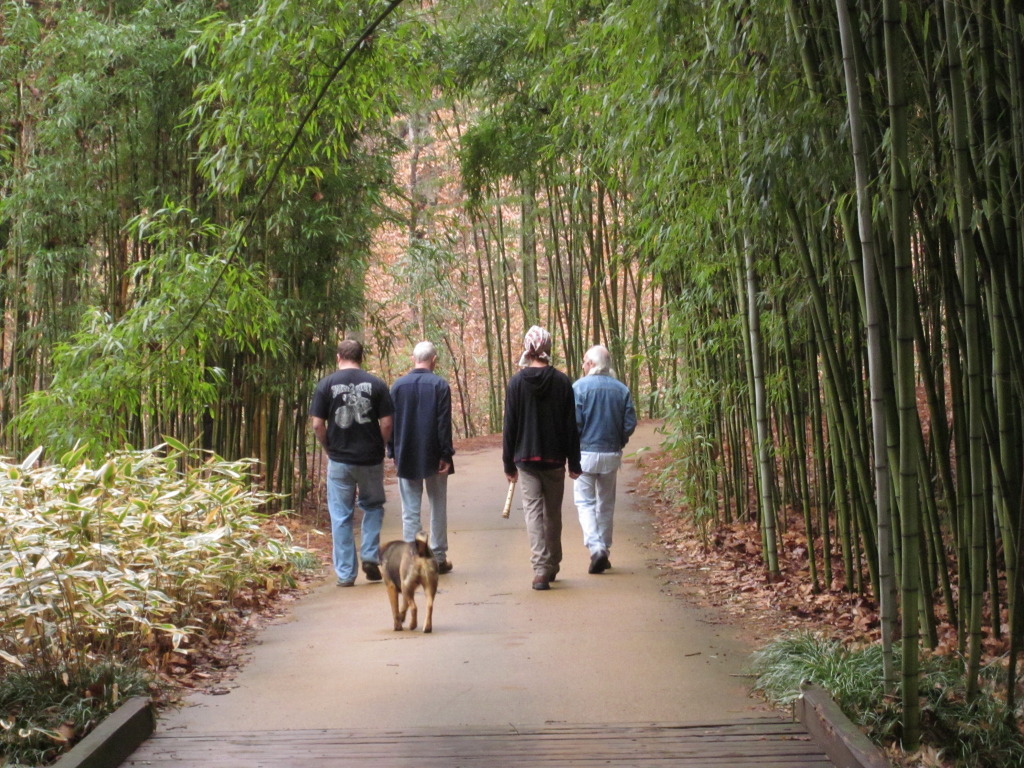
Me and my father walking and talking with Jim Mortensen and his son in his Alabama bamboo groves, 2010
Beginning in 2009, I began my odyssey with domestic North American grown Japanese Madaké bamboo for the crafting of shakuhachi. Over the years, I sought out the oldest groves, or they found me [in 2023 I moved to France and perhaps I'll find some here in Europe]. It all began in the late winter of 2009 when I found and harvested from a huge, old Japanese Madaké bamboo grove prospering just a few towns over from my birthplace of Norfolk Virginia.
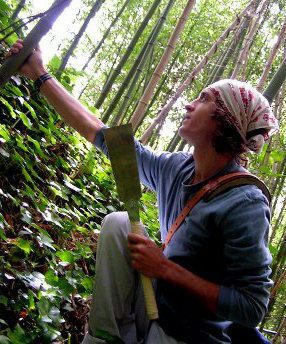
Me in my first North American Japanese Madaké bamboo grove, Virginia, 2009
It’s a truly massive old grove which was planted next to a large Japanese company (I actually found the US all time record for the largest diameter stalk of Madaké bamboo there). At the time, it really didn’t occur to me that Madaké might be growing in America, which is silly in retrospect. When I was a kid, my own yard was full of ornamental Japanese and East Asian plants which my grandfather and father cultivated.
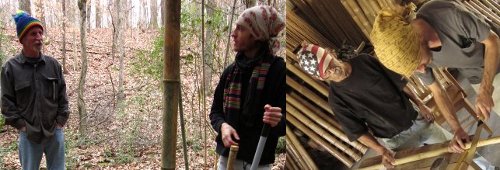
Me with Jim on left and with Keiji on right, 2010 and 2011
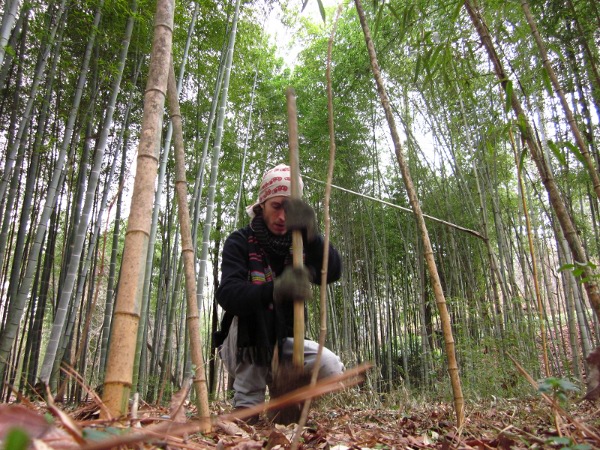
Harvesting Madaké bamboo (sub. var. 'Green stripe') for shakuhachi (note the giant Moso bamboo behind me), 2010
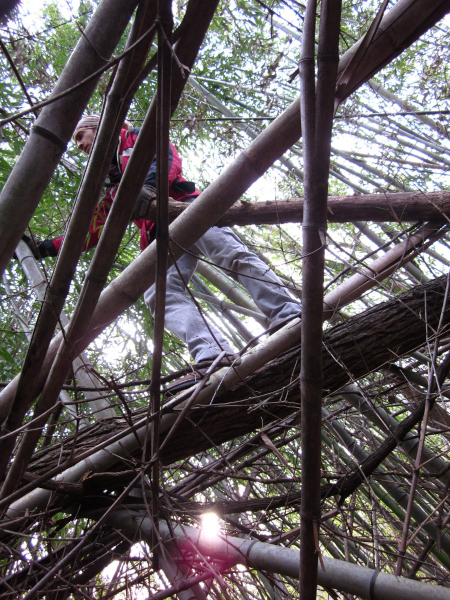
Precariously traversing a wild, unkempt Madaké bamboo grove in search for the perfect pieces for shakuhachi, 2010

Playing shakuhachi by visible Madaké bamboo rhizomes, 2010
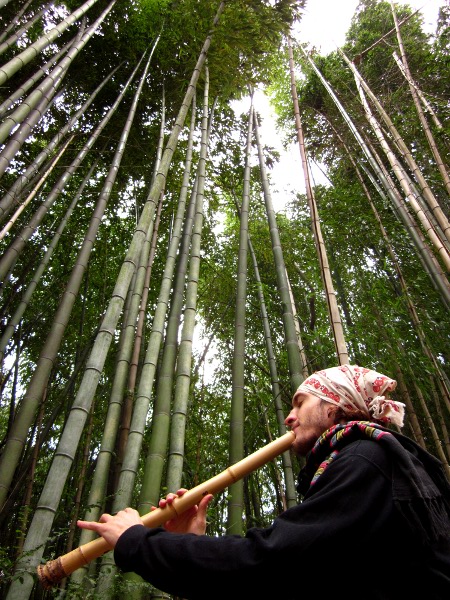
Playing shakuhachi in front of giant Madaké bamboo, 2010
I went on to harvest extensively from mature Madaké bamboo groves in Alabama thanks to the help of Jim Mortensen, an avid bamboo enthusiast. I also met with Keiji Oshima, owner of Haiku Bamboo Nursery which is nestled in the hills of Hendersonville, North Carolina.
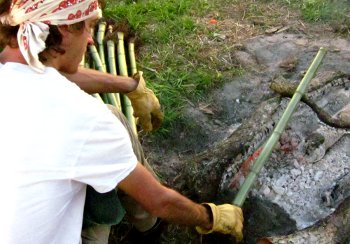
Performing aburanuki, 2010
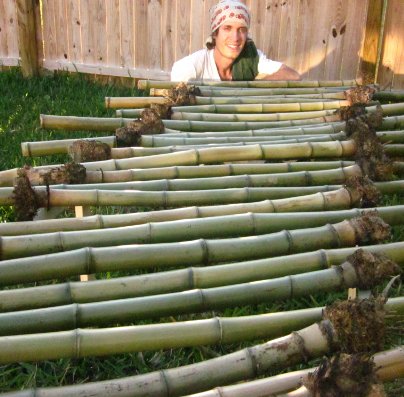
With my harvest of Japanese Madaké bamboo drying in the sun, 2010

Playing shakuhachi for the tour of Keiji Oshima's bamboo groves, 2012
Before moving to the Asheville NC area in 2010 [I now live in France], I had become aware of Keiji Oshima and his bamboo via an internet search. While not in Asheville, Keiji san and his bamboo are just a few towns over in Hendersonville. There, on a mountain, Keiji san has built his own house and has been growing Japanese Madaké bamboo and other types of bamboo for decades. He also sells pieces for crafting shakuhachi and dabbles with making them himself.
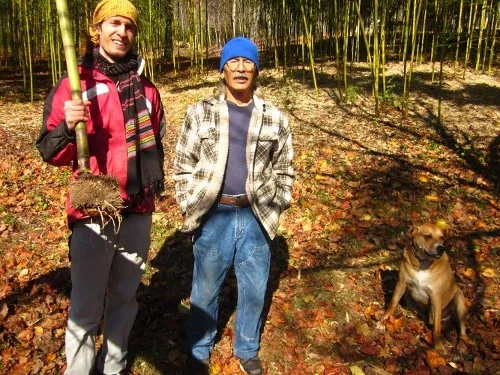
Holding a piece of freshly harvested root end Madaké bamboo next to Keiji Oshima, 2012, NC
Graciously, Keiji san allowed me to select and harvest a piece of his bamboo, grown with love and care. Keiji san marks each stalk so he knows exactly how old each one is, ensuring that they're harvested at their peak, around 4 to 8 years old, before they die.
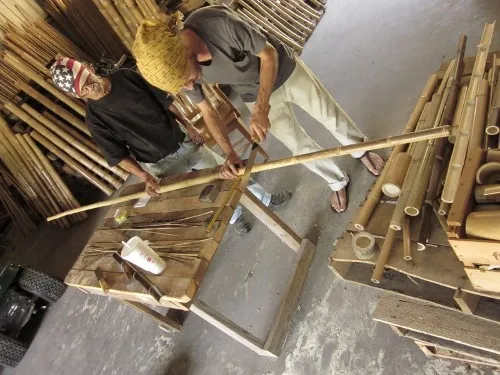
Me on the right cutting a pole of Makino bamboo with Keiji on the left, Haiku bamboo warehouse, 2012
After a lovely tour of Keiji's immaculate bamboo groves it was back to his enormous warehouse where hundreds upon hundreds of bamboo poles are at various stages of drying. Keiji is primarily a basket weaver and splits his own bamboo down to weave his baskets. Truly amazing and inspiring.
Videos of me harvesting Japanese Madaké Bamboo for Shakuhachi
The videos above show me harvesting Madaké Japanese bamboo (také hori ). They also show me processing the bamboo, including performing Aburanuki or "fire curing". Hours, days, or even weeks of labor was edited down to just minutes (no part of the 10 or so hours of root cleaning and trimming was filmed, for example).
History of Japanese Madaké bamboo in North America
Pioneer Philanthropist and world traveler Barbour Lathrop (1847-1927) was most passionate about introducing bamboo into the United States. The study and collection of bamboo was the primary focus of Lathrop’s third expedition with David Fairchild (1869-1954), another pioneer, while they were in Japan in 1902. Lathrop told Fairchild, “One of the main things here [in Japan] is the Bamboo. I want to finance a big shipment of the plants to America. We should have them at home. Bamboo is beautiful as well as useful. The Japanese use it for everything. It may take a long time before Americans learn how to use it, but they’ll never learn if we do not introduce the plant. Don’t spend so much time on other things that you can’t study the bamboos.”

David Fairchild examining a bamboo shoot, unknown date
Most of Madaké bamboo’s history in the United States is contained in the Fairchild Archive Collections. The story starts in 1890 when a Mrs. H. B. Miller planted three Madaké bamboo plants on her farm along the Ogeechee River. The parent plants had been brought to Georgia in the 1880’s by a Cuban born rice planter named Andres E. Moynelo. David Fairchild said that, “P. Bambusoides [Madaké] was introduced [to The US] by a one Andres E. Moynelo in the late 1880’s”. A world traveler and rice planter, Moynelo introduced Madaké to the United States after a visit to Japan.
In 1915 a worker on Mrs. H. B. Miller’s farm feared the Madaké grove would be destroyed. He wrote to David Fairchild in Washington, D.C. informing him that the owner planned to cut the Madaké down and he asked Fairchild to save it. Fairchild was amazed to find a huge, healthy grove of valuable Madaké. He told Barbour Lathrop about the Madaké grove and suggested that he buy it. In 1919, Lathrop bought the property and gave it to the USDA for use as a Federal Plant Introduction Garden. The site is now known as The Coastal Georgia Botanical Gardens which is part of the University of Georgia’s Cooperative Extension Service.